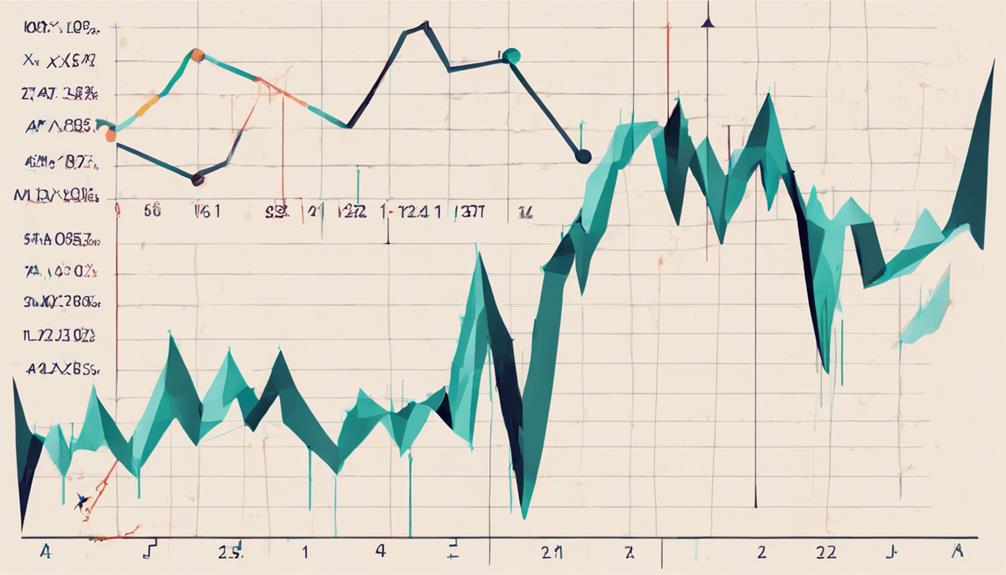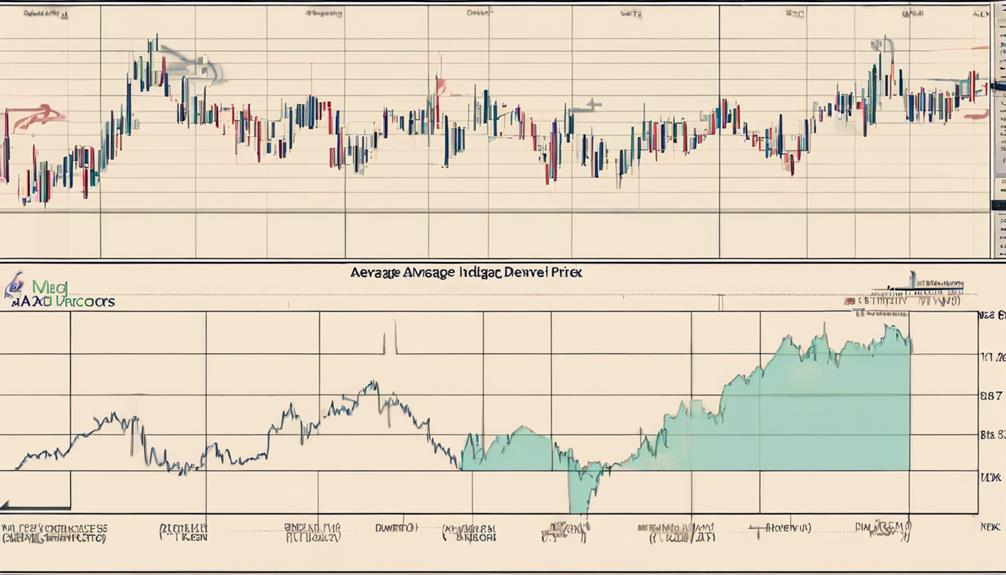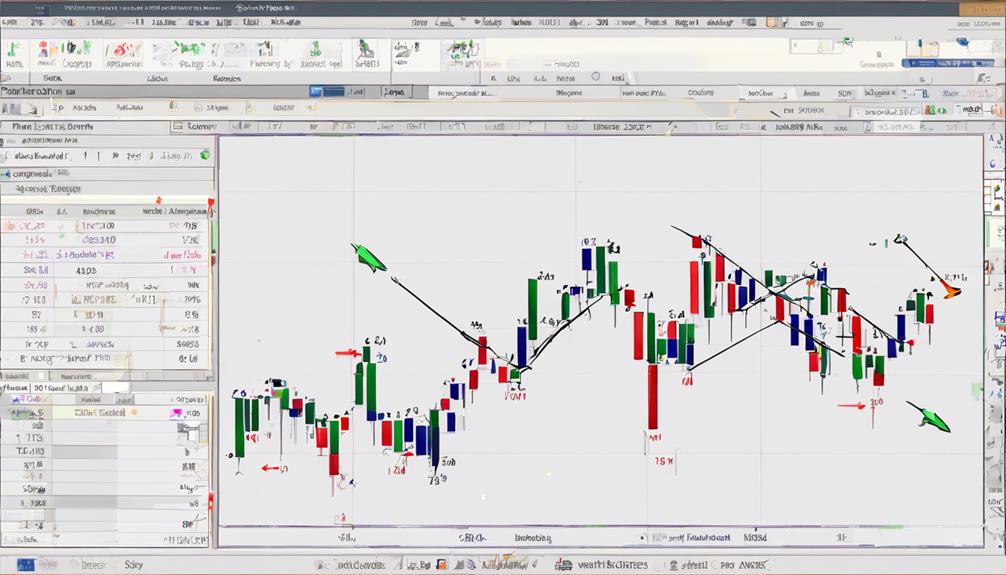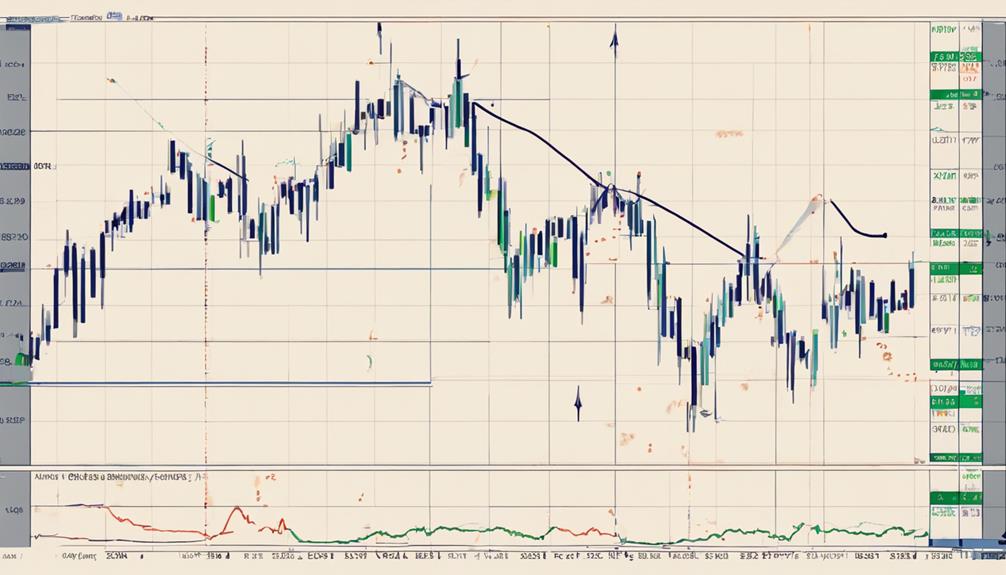The Average Directional Index (ADX) serves as a foundational tool in technical analysis, offering traders valuable insights into market trends. Understanding how to interpret ADX values, along with the complementary indicators +DI and -DI, can significantly enhance one's ability to make informed trading decisions.
By diving deeper into the nuances of ADX calculation and application, traders can uncover a wealth of strategic possibilities that may help them navigate the complexities of the financial markets with greater precision.
Definition and Purpose of ADX
The Average Directional Index (ADX) is a technical indicator devised by J. Welles Wilder Jr. with the primary purpose of gauging the strength of trends in financial assets. This index is widely used in trading to assess the strength of a trend, which helps traders determine whether the trend is weak or strong.
By analyzing the ADX values, market participants can make informed decisions on entering or exiting positions based on the trend's strength. ADX values typically range from 0 to 100, with readings above 25 indicating strong trends and below 20 indicating weak trends.
The ADX is a valuable tool in financial markets as it provides traders with insights into the momentum of price movements, assisting them in making strategic trading decisions. Overall, the ADX is a crucial indicator in technical analysis, offering traders a quantitative method to evaluate and capitalize on market trends effectively.
Calculation and Interpretation

To delve into the calculation and interpretation of the Average Directional Index (ADX), it is crucial to understand the methodology behind deriving this technical indicator. ADX is calculated by smoothing 14-period averages of the Directional Movement indicators, including the positive Directional Movement (+DM), negative Directional Movement (-DM), and true range, using exponential moving averages.
The calculation of ADX involves deriving the positive Directional Indicator (+DI) and the negative Directional Indicator (-DI) based on these smoothed values. The ADX itself is calculated as 100 times the exponential moving average of the absolute difference between the +DI and -DI, divided by the sum of +DI and -DI. This formula, which incorporates moving averages of price range expansion, provides traders with a metric to assess trend strength and direction.
Understanding the calculation and interpretation of ADX is essential for making informed trading decisions based on the trend signals it generates.
ADX Vs. Other Indicators

In comparison to other technical indicators, the Average Directional Index (ADX) stands out as a robust measure of trend strength, distinct from indicators like RSI and MACD. ADX is a trend strength indicator, while RSI focuses on overbought and oversold conditions. Unlike MACD, which combines moving averages, ADX solely measures trend strength without considering price direction.
The Relative Strength Index (RSI) complements ADX by identifying potential reversal points, whereas ADX primarily focuses on trend strength. Moving Average Convergence Divergence (MACD) includes signal lines for trend confirmation, which is different from ADX's single line approach.
On the other hand, the Stochastic Oscillator provides overbought and oversold signals, contrasting with ADX's emphasis on trend momentum and direction. The ADX's unique focus on trend strength makes it a valuable tool for traders looking to assess the strength and direction of a trend accurately.
Practical Application of ADX

Application of the Average Directional Index (ADX) in financial analysis provides traders with a reliable tool for assessing trend strength and direction. Traders often rely on ADX values above 25 to confirm strong trends, indicating potential trading opportunities.
By integrating ADX with moving averages, traders can enhance the accuracy of trend analysis. ADX crossovers, such as the positive directional indicator (+DI) crossing above the negative directional indicator (-DI), can serve as entry or exit signals, signaling bullish trends.
Understanding how to interpret ADX values and signals is essential for developing effective trading strategies based on trend strength. Traders utilize ADX not only to identify trends but also to gauge their robustness, guiding decisions on when to enter or exit positions.
Limitations and Considerations

When utilizing the Average Directional Index (ADX) in financial analysis, traders must be mindful of its limitations and considerations.
- ADX can generate false signals in choppy or sideways markets due to its lagging nature.
- It may not provide specific price levels for precise entry and exit points, requiring additional analysis tools.
- ADX is more effective in trending markets rather than ranging or consolidating markets.
- Traders should use ADX in conjunction with other indicators for comprehensive analysis and trading decisions.
Understanding these limitations is crucial for avoiding misinterpretations and ensuring the effective use of ADX.
Traders should be cautious when relying solely on ADX in sideways markets, as it may lead to erroneous signals. To enhance the accuracy of trading decisions, combining ADX with other technical tools is recommended.
What Are the Basics of Average Directional Index (ADX) and How Can It Be Applied?
The average directional index essentials are crucial for understanding market trends. ADX measures the strength of a current trend, and values above 25 indicate a strong trend. It can be applied to filter out weaker signals and identify potential entry or exit points in trading strategies.
Frequently Asked Questions
How Do You Use Average Directional Index in Adx?
Average Directional Index (ADX) quantifies trend strength by analyzing price movement. Traders employ ADX values above 25 for robust trends and below 20 for weaker ones. ADX doesn't indicate trend direction but aids in making strategic trading decisions.
How Do You Calculate ADX Step by Step?
To calculate ADX step by step, first compute the True Range (TR) using the high, low, and previous close. Smooth 14-period averages of +DM, -DM, and TR. Then, calculate the +DI, -DI, and DMI. Finally, use these values to derive the ADX.
What Is the Best Setting for the ADX Indicator?
The optimal setting for the ADX indicator, crucial for assessing trend strength, often defaults to a period of 14, offering a well-rounded perspective. Traders, however, may fine-tune this based on their style, with shorter periods for sensitivity and longer ones for smoother readings.
What Is the Formula for the ADX Index?
The formula for the ADX index calculates the 14-period average of the positive and negative directional indicators. It involves smoothed averages of these directional indicators and their absolute difference, all divided by the sum of the two.
Conclusion
In conclusion, the Average Directional Index (ADX) is a valuable tool for traders to assess market trend strength and make informed decisions. By analyzing the ADX values along with the positive and negative directional indicators, traders can determine the direction and strength of trends in the financial markets.
However, it is essential to consider the limitations and use ADX in conjunction with other indicators for a comprehensive analysis. Remember, in trading, knowledge is power.
